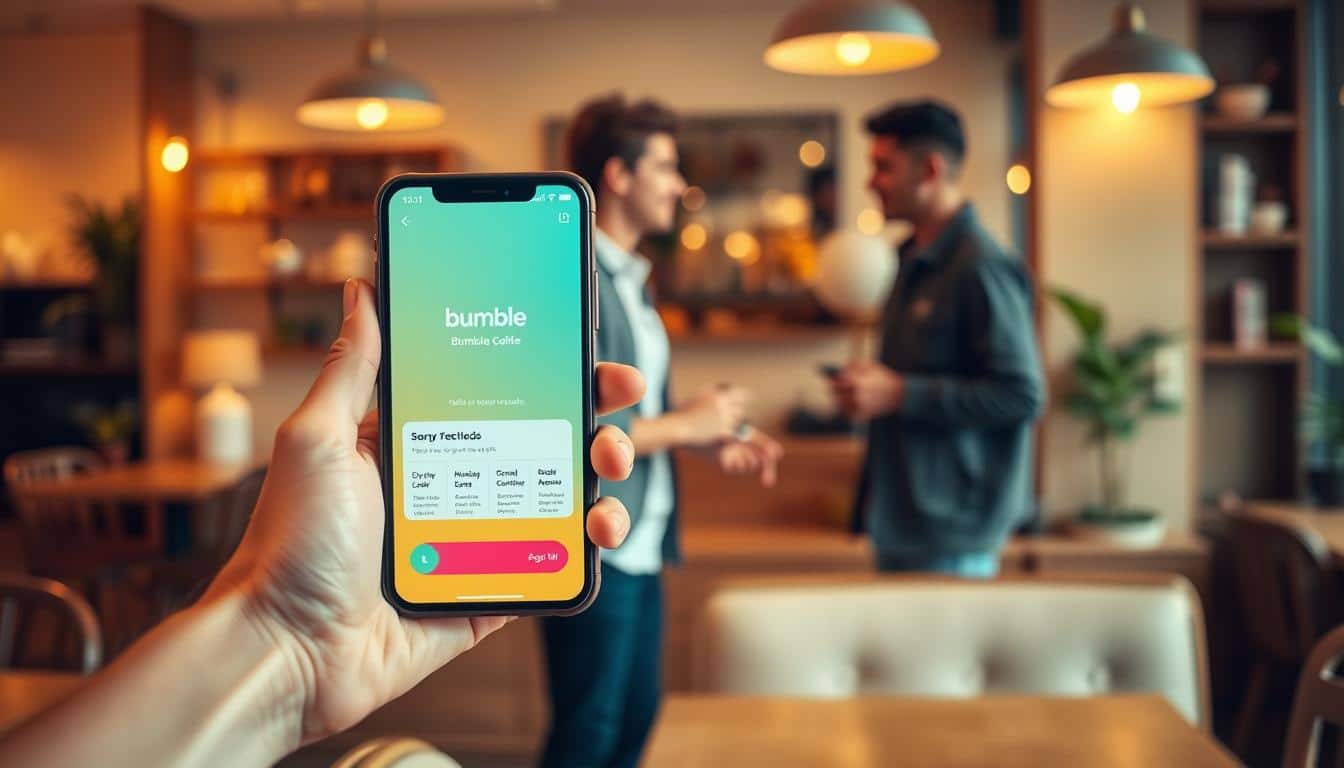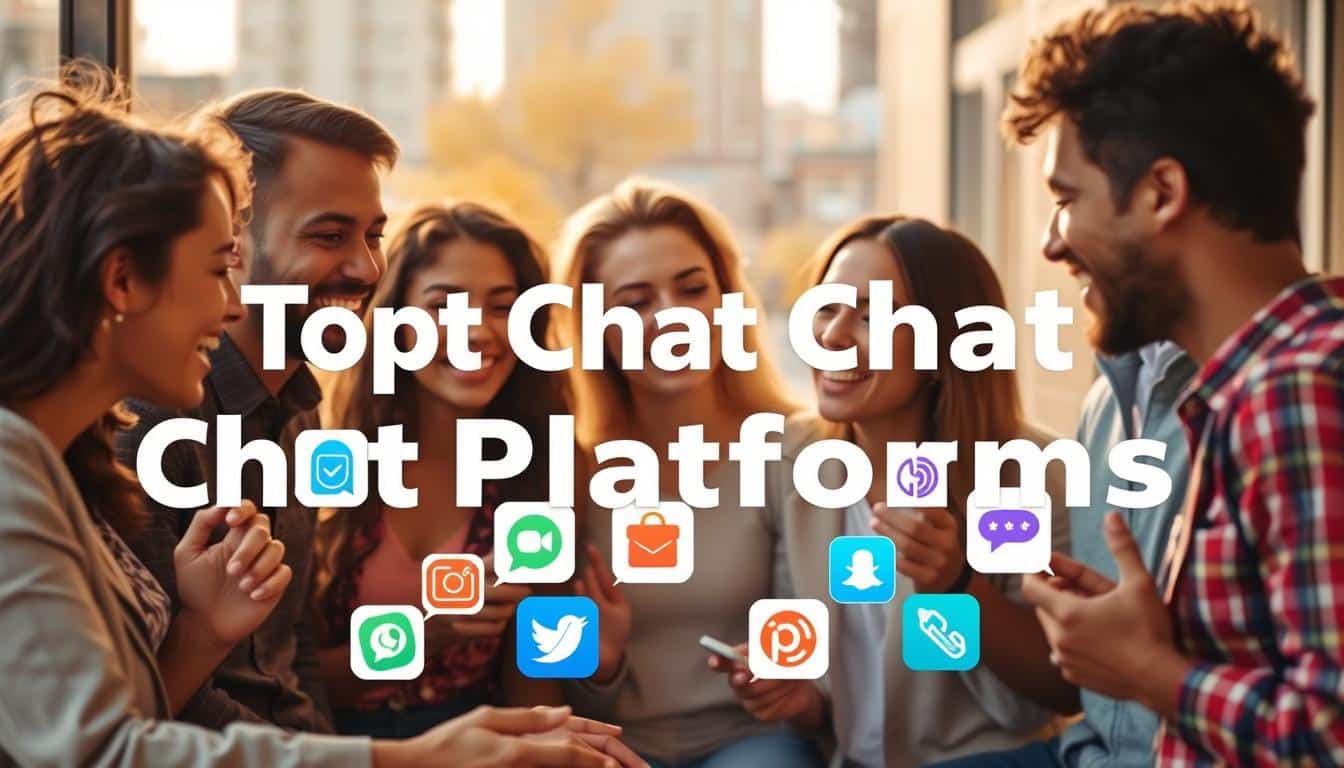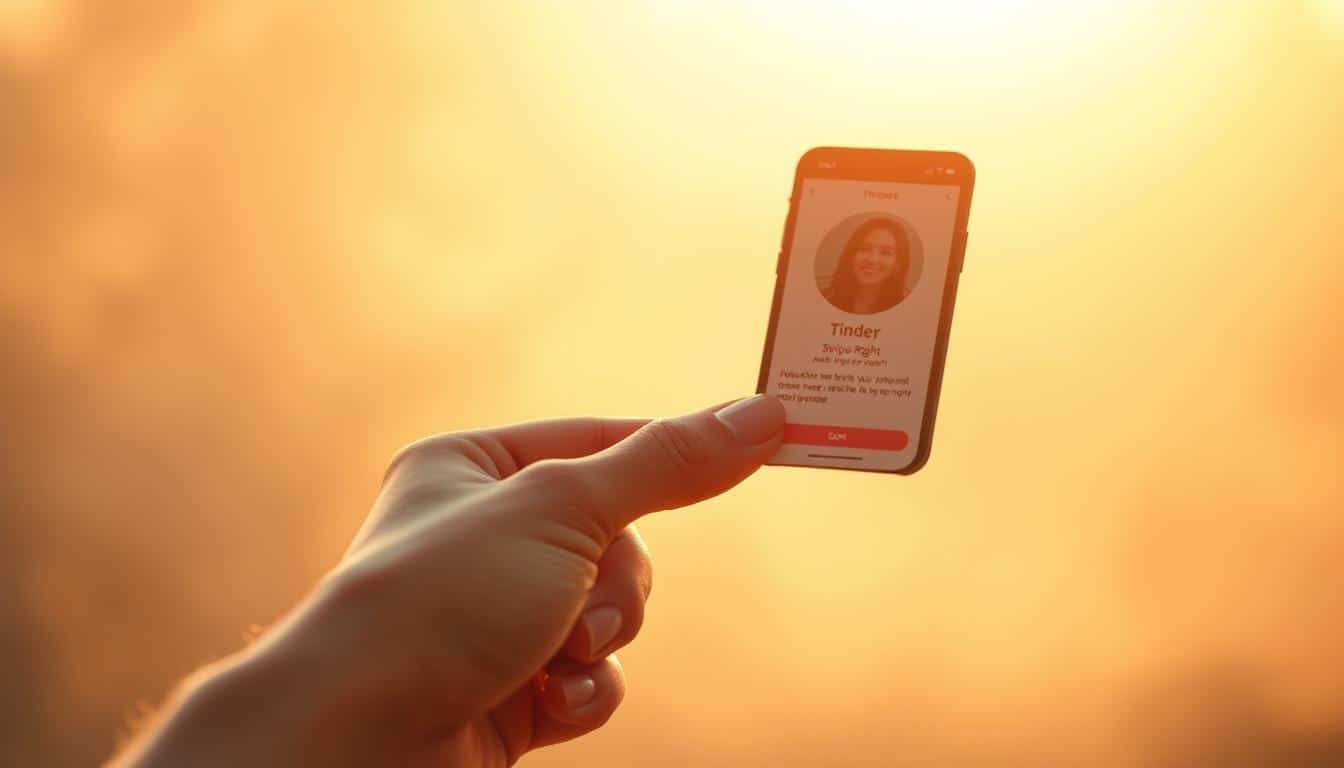Anúncios
What attracts you in a "match"?
Dating apps have made meeting new people easier in the United States. This piece looks at the real benefits of dating apps, based on research and user experiences. We’ll explore the good parts of dating apps, but also talk about safety and being shallow.
Apps like Tinder, Bumble, and others offer different features. Swipe mechanics, profile questions, matching algorithms, and community focuses vary between them. These features explain why dating apps can be so helpful.
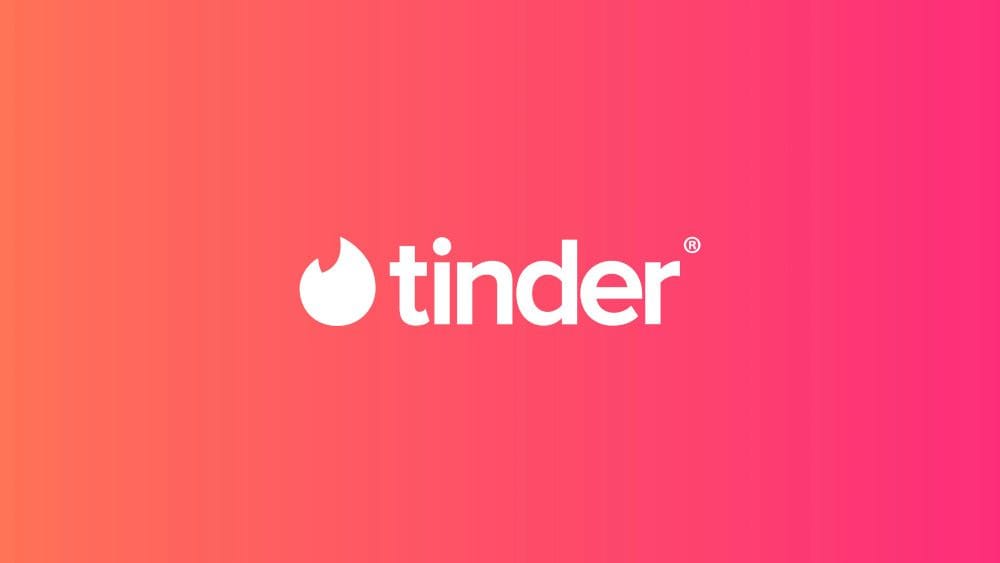
Tinder
Talking about online dating’s positives is important for a balanced view. Users have found they can reach more people, date conveniently, and match better. We’ll look at the benefits: finding more matches, making new friends, better match tools, learning to communicate better, safety features, success stories, being inclusive, and helpful tips.
This article is for U.S. singles, people trying out dating apps, and those interested in modern dating tools. We aim to provide friendly, useful info on dating app benefits and using them well.
Key Takeaways
- Dating apps give you more chances to meet potential partners than the old ways.
- Both popular and niche platforms have different benefits for what you might need.
- Studies and people using them have found real perks to dating apps for easy dating and better matches.
- Knowing the good parts along with safety concerns helps you make smart choices.
- We’ll discuss making new friends, getting better matches, improving your chat skills, and being welcoming to everyone.
Find out the positive sides of dating apps
Dating apps help you meet people outside your usual crowd. They let users find others in different cities or life stages. This way, it’s easier to meet someone with similar ambitions. People can look for friends, casual dates, or serious partners with broader options.
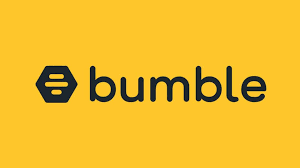
Bumble
Greater access to potential matches
With Tinder, Hinge, Bumble, and Match, meeting new folks becomes easy. You can search near you or in other places when traveling, opening up long-distance opportunities. These apps also allow filtering by what kind of relationship you’re after, connecting you more accurately.
Convenience and time efficiency
Your busy life doesn’t have to slow down your dating. With apps, you can browse and chat in short breaks. Quick messaging and seeing when others read your texts make things faster. Upgrades like Tinder Plus or Bumble Boost offer extra features. They help you avoid profiles that don’t match your needs, saving time.
Opportunities for niche and interest-based matching
Specialized apps and filters make finding someone with shared interests possible.
Platforms like JDate or Christian Mingle cater to specific groups. They offer ways for users to show their lifestyles quickly. This increases your chances of meeting someone who truly gets you.
How dating apps expand your social circle
The right app can widen your social circle beyond what’s usual. It opens doors to people you’d never meet at work or local events. This makes meeting new friends easier when you’re on the move or just need a fresh scene.
Meeting people outside your usual social and geographic circles
Location-based features let you check out profiles in different cities. With tools like Tinder Passport and Bumble’s Spotlight, you can explore new places. These features help grow your social network, whether you’re moving or just visiting somewhere new.
Connecting with different age groups and backgrounds
Apps let you filter by age and interests, introducing you to a wide variety of people. You might meet neighbors, retirees, students, and professionals. This variety reduces social sameness and broadens your views.
Facilitating friendships as well as romantic relationships
Many apps now support making friends, not just dating. Platforms like Bumble BFF and features in Facebook Dating promote making new friends. People use these tools for finding workout pals, networking, or joining clubs.
These apps offer a wide range of connections for various needs. Whether it’s for exercise, reading, or travel, these platforms assist in making meaningful friendships.
How dating apps improve compatibility matching
Dating apps are now more than simple swipes. They combine straightforward preferences with behavioral cues. This helps users find matches who want the same type of connection.

Platforms like OkCupid and eHarmony use algorithms to sift through profiles. These consider your likes, question answers, and how you interact. They aim for matches with shared interests to spark good first talks.
Users can search based on music tastes, hobbies, or politics. This approach makes it easier to find someone with similar interests. It often makes the first date feel more comfortable and connected.
Apps like Hinge and Bumble use profile prompts for brief but telling replies. These fields allow for showcasing values and humor. They help filter out people with different relationship goals or family plans.
Behavioral matching improves suggestions by learning from your app activities. It looks at which profiles you spend time on, who you like, and how you message. Over time, this fine-tunes your matches to fit your real preferences better.
Your privacy is important. Leading apps explain how they use your data. It’s a good idea to check your settings. This way, you control what the app learns about you.
| Feature | What it measures | How it boosts matching |
|---|---|---|
| Question-based scoring | Answers to relationship and lifestyle questions | Highlights aligned values and long-term goals |
| Shared-interest filters | Music, hobbies, politics, travel | Creates immediate conversational common ground |
| Profile prompts | Short personal responses showing personality | Reveals humor and priorities beyond photos |
| Behavioral matching | Swipes, likes, time on profile, message replies | Adapts suggestions to actual user choices |
Dating apps and improved communication skills
Dating apps are like a daily workshop for our social skills. Messaging regularly helps us get better at making our point clear. We become more confident in real chats by winning small interactions online.
Practice with starting conversations and icebreakers
Users get to try different ways to start talks and see what works. Short messages that pick up on something from a profile or ask something fun do well.
On apps like Bumble or Hinge, playing with greetings shows what catches someone’s interest. This helps people get good at how and when to say things without the stress of face-to-face meetings.
Learning to express boundaries and expectations clearly
In profiles and early messages, you can say what you’re looking for right away. Phrases like “I’m searching for something serious” or “I like to text before we meet” help avoid confusion.
Online, it’s easier to practice how to set limits kindly and negotiate respectfully. Features that allow you to show what you want help keep everyone on the same page.
Developing resilience and handling rejection respectfully
Rejection happens more softly online. You learn to not take things too hard.
Dating apps have guidelines and features for when things don’t work out. This teaches us how to bow out gracefully and stay kind even when rejecting someone.
| Skill | How apps help | Practical tip |
|---|---|---|
| Initiating chat | Low-pressure practice with varied openers | Reference a profile detail and ask a light question |
| Stating needs | Profile bios and preference tags make goals visible | Use short, direct sentences about intent |
| Emotional resilience | Frequent small rejections reduce fear of rejection | Limit sessions and reflect on progress, not every outcome |
| Respectful disengagement | Block/report tools and community standards guide behavior | Send a brief, polite message or simply end the conversation |
Safety features and ways apps promote secure dating
Dating apps are safer when you know the tools available and how to use them. Tinder, Bumble, and Hinge have features that lower risk. They help users feel more sure about meeting new people. This guide covers key protections and offers clear safe dating tips.
Verification badges and identity checks
Apps like Bumble and Tinder show verification badges on profiles. This means the profile passed identity checks. Some let you link social accounts or show a government ID for better validation. Badges decrease catfishing, making it safer to plan meetups.
In-app reporting, blocking, and privacy settings
All the big apps let you report and block bad users. Tinder, Hinge, and Bumble have teams to look at abuse reports. You can hide your profile details, control who messages you, and manage who sees your location. Using these tools fast can stop harassment and protect others.
Safety tips for meeting in person and sharing location
Use basic safe dating tips for meeting face-to-face. Choose public places for first meetings. Tell someone your plans and keep it brief. Share your location with a friend through Google Maps or Apple’s Find My instead of sharing your home address. Using ride-shares can be smarter than driving yourself.
Before meeting, some check backgrounds with third-party services. Trust your feelings and report anything weird right away. Using verification, in-app protections, and safe dating advice helps make meetings secure.
| Feature | What it does | Where to find it |
|---|---|---|
| Photo verification | Confirms a live selfie matches profile photos | Bumble, Tinder |
| Government ID check | Stronger identity proof for trust and safety | Selected platforms and premium tiers |
| Report and block | Stops contact and files complaints with support teams | Tinder, Hinge, Bumble (in-app) |
| Privacy controls | Limits profile visibility and message permissions | Account or safety settings |
| Temporary location sharing | Lets a trusted contact follow your route briefly | Google Maps, Apple Find My, in-app safety tools |
Success stories: dating apps leading to meaningful relationships
A lot of people who’ve tried online dating ended up changing their lives. They went from just dating to getting married. Reports often talk about couples who met through apps like Match or Tinder, and then got married. These stories show that dating apps can lead to true love.

Examples of long-term relationships and marriages
Research has seen an increase in marriages from dating apps in the last ten years. According to the Pew Research Center, more couples are meeting online than ever before. Many started with casual chats and ended up getting married.
Personal narratives that humanize the technology
Some users were unsure at first but found love and trust. For example, a person found a match through an app based on shared interests. They learned about themselves and each other through chatting. Stories also include people finding love again, connecting across cultures, and friendships turning into love.
Data and studies supporting successful outcomes
Studies show that online dating can increase the variety of relationships and help people connect over long distances. Looking at how these couples do over time, research finds they are just as happy as those who met in traditional ways. Studies also highlight that success can vary depending on the app and the users’ goals. But overall, many people find love online.
These stories and data give us a full view of how relationships are forming today. They mix personal stories with research, showing us why so many people talk about finding love on dating apps.
How dating apps support diverse communities
Dating apps are now more inclusive, serving various communities. They provide tools for finding partners with similar identities, values, and goals. This reflects an effort to make online dating diverse, respectful, and valuable for all.
Inclusivity features for LGBTQ+ users
Apps like OkCupid and Tinder now include more options for gender and orientation. Grindr and HER are specialized for queer communities. Also, mainstream apps have added pronoun options, search filters, and safety features.
LGBTQ+ features allow users to express themselves freely and find matches who respect their identity. Tools to report harassment boost confidence in dating within queer communities.
Options for non-traditional relationship structures
There are apps for those in open or non-monogamous relationships. Feeld, for example, lets users specify their relationship preferences to reduce misunderstandings.
These apps offer clear labels and prompts about consent and relationship styles. This facilitates finding partners who are comfortable with polyamory, clarifying boundaries early on.
Localization and language support for immigrant communities
Apps help immigrants connect with others who share their language or culture. Features like language options and local filters bridge gaps in new environments.
By including multilingual profiles and cultural cues, dating becomes easier for immigrants. These tools assist in meeting people from similar backgrounds or learning a new language through dating.
Practical tips to get the most out of dating apps
Set clear goals and a routine for using the apps. Brief, daily sessions are better than long ones that happen only sometimes. Decide how many good conversations you aim to have each week. Also, plan when to move a conversation from the app to a phone call or meeting.
Creating an authentic and attractive profile
Choose recent photos that show you in different settings: a clear face shot, a full-body photo, and a candid shot of you doing an activity. Keep the use of filters low. This makes your photos look genuine and welcoming.
Your bio should be short and show off your interests, values, and relationship goals. Use the app’s prompts to share things like your hobbies or a deal-breaker. Updating your profile after life changes keeps it fresh.
Effective messaging strategies and conversation starters
Start conversations by mentioning something from their profile or photos. Ask a brief question that can’t be answered with just ‘yes’ or ‘no.’ This encourages a more interesting response. Match their messaging style to build a connection without pushing too fast.
Use humor and show interest to make the conversation fun. Move the chat to a call or video when both feel at ease. This helps you figure out if you click before meeting in person.
Balancing online and offline interactions
Plan to move from chatting online to a meeting soon. A quick, safe meeting can reveal if there’s chemistry. For people far away, start with a video call to discuss meeting plans and check if you’re compatible.
Keep your hopes realistic. Not all matches will lead to more. See each chat as a chance to get better at talking and setting boundaries, so you’re ready for the right person.
- Keep your profile fresh and truthful to build trust.
- Personalize messages; avoid generic openers.
- Plan short, safe meetups to shift from online to offline dating.
Conclusion
Dating apps have many positives. They open up more chances to meet people and help grow your social network. They also make it easier to find someone who matches what you’re looking for. This shows how online dating can be good for both fun dates and serious relationships.
These apps now have safety features like verification badges and ways to report issues. They also welcome people from all backgrounds, including the LGBTQ+ and immigrant communities. While they’re not perfect, using these tools wisely can lead to real connections. Finding the right balance is key to a good experience with online dating.
If you follow the tips shared here—making an honest profile, using the safety options, and being clear about what you want—you’ll make dating apps work for you. In the U.S., where the way we connect is always changing, these apps offer a smart, safe way to meet others. Just remember to stay safe and treat everyone with respect.







